I’ve been asked to install three 12″ x 12″ x 2″ shelves in a corner of a basement. The HO is asking that any supports be hidden or minimal. I can screw into one side from a closet but the other side is against a wall. Any ideas would be great. Thanks.
Discussion Forum
Discussion Forum
Up Next
Video Shorts
Featured Story

By considering things like energy-efficient mechanicals, window orientation, and renewable energy sources, homes can be evaluated to meet the energy codes. Here's what the IRC has to say.
Featured Video
Builder’s Advocate: An Interview With ViewrailHighlights
"I have learned so much thanks to the searchable articles on the FHB website. I can confidently say that I expect to be a life-long subscriber." - M.K.
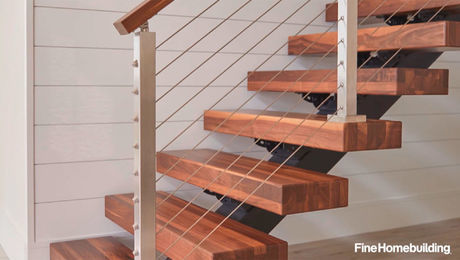


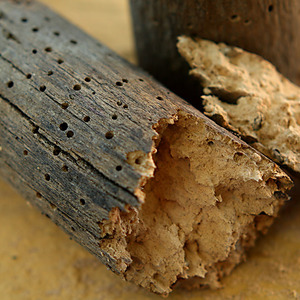
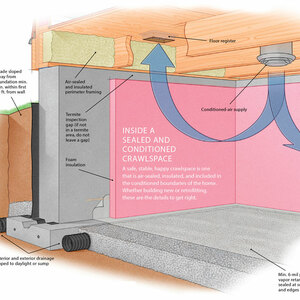






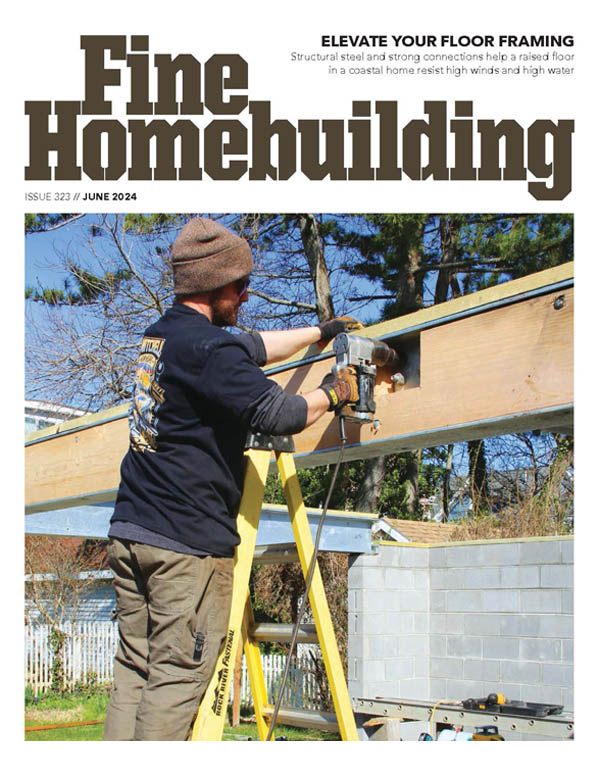

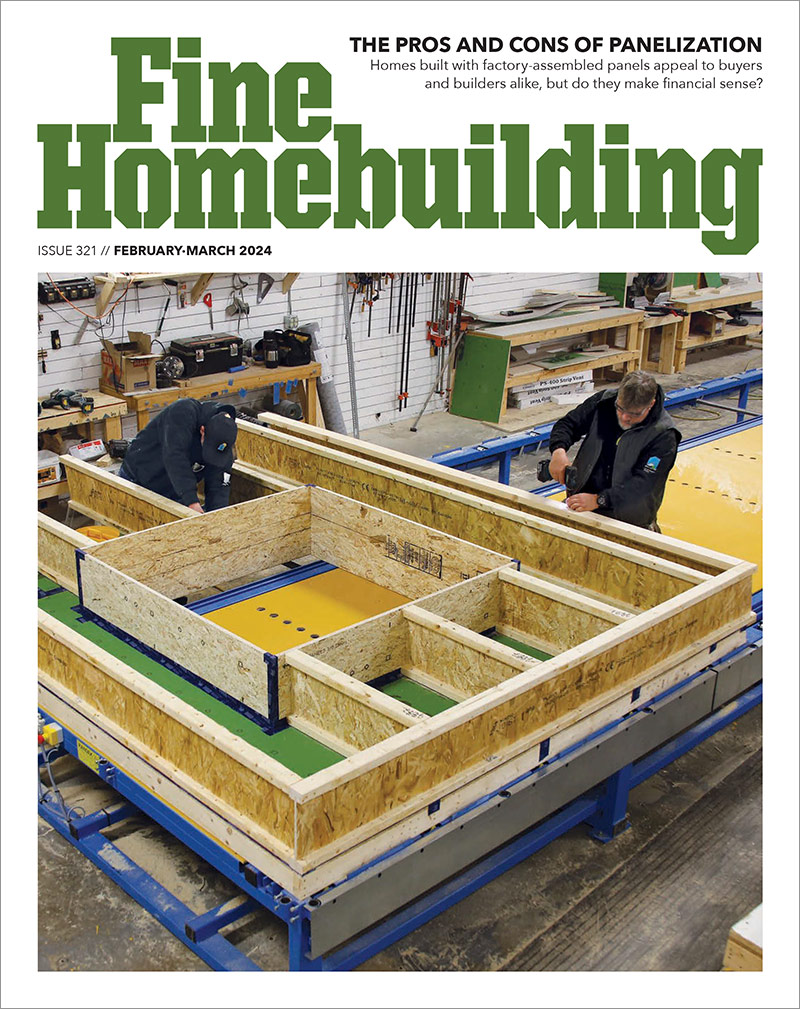

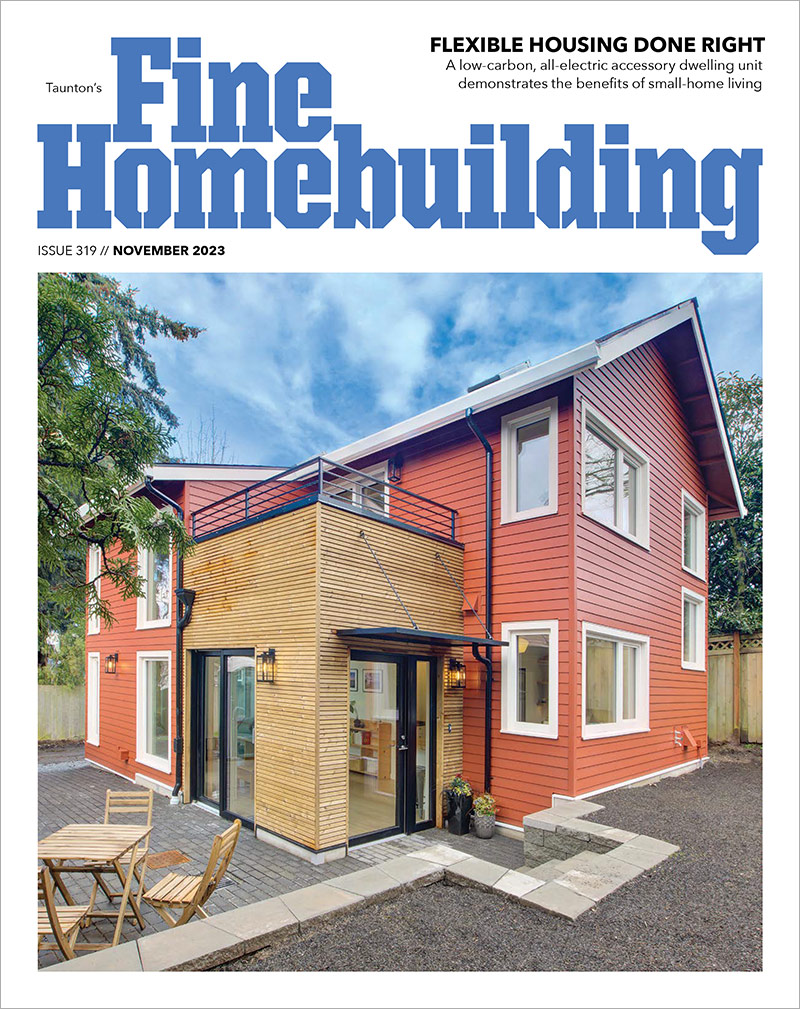

Replies
Good Morning.
If the shelves are indeed 2" thick, when you make the shelves, you could create a void in the back of each side. Make it as deep as your ledgers are thick. Then you attach the ledgers, and the shelf fits OVER the cleats. You can then nail or screw from the top or bottom onto the cleat.
They do this trick all the time on those design invasion shows. I personally like to make a ledger with a nice routed edge finished like the shelf. It's extra trim that only looks good.
Good luck. RIck G.
How big of a cleat do you think would be necessary to support a shelf of that size?
Since you're going into a corner where you're going to have cleats on both sides, they don't have to be too big. Bigf enough to be comfortable to work with and run screws into. But the shelf really dictates that. Use nice 1/4" baltic birch ply for the top & bottom, and whatever size filler to make the thickness look right.
I'm sorry, I thought you wanted it done the right way.
I rec'd this email and I thought everyone might benefit ...
Hi, it's xhammerandnailsx aka Wes.>> The shelves I'm installing are already made. They were extras to ashelving unit the HO purchased. My fear is because they are 12 x 12 andgoing into a corner, that they won't be supportive towards> the outer edge. I'll email the HO and get his opinion on the cleats.>> Wes
Since the shelvbes are 2" thick, you have enough room to rout a recess along most of the wall edge, and then still use the cleat. Or maybe use a piece of aluminum angle screwed to the wall with an appropriate slot cut into the edge of the shelf.
If the shelves were going to be attached to only one wall, then you would have some concern about supporting the outer edge. But the sketch I drew is actually a torsion box (of sorts) and it would work well as long as the fit between the cleat and shelf recess was tight. In your case, being in a corner, it will be well supported.
I'm sorry, I thought you wanted it done the right way.
What Ed says is true; a torsion box or any sturdy material fastened allong two sides should be okay. But since we don't exactly know what these shelves are made of (2" thick?), or whether they will be holding car batteries or barbells, I thought I'd add a couple of further options. How about some thin dowelling between the shelves' outside corners? the lowest shelf could be supported with an inconspicuous aluminum angle to the corner, then the support could transfered straight up. Another approach would be suspension. Some people actually like the "industrial" look of cable attached to a ceiling joist. For your situation these ideas are probably overkill, but then again, unless the "clean look" is extremely important (like a store display), a shelf should always be able to hold the heaviest object that can fit on it.
Years ago I built a shelf out of 1 x 12 white oak in the shape of a zig zag. I mounted it to the wall with two key hole plates made out of 1/8th inch thick brass. They were mortised into the back edge of the shelf thirty two inches apart. I drove long wood screws into the studs and slipped the shelf on to the screws.
My concern with the cleat method is that only a thin amount of material is riding on the cleat and that this is the effective bearing thickness. Depending on the shelf material, this may or may not be a problem.
The key hole plates (purchased from the Berkeley, California Woodsmith retail store when it still existed) transfer the load to the entire thickness of the shelf material if the mortises are accurately cut. I think Brusso might make them now.
Pocket screw?
The tricky part would be inserting a plastic anchor in the wall in the right location at the right angle.
The cleat idea sounds easier, but I can't see how it would snug the shelf up against the wall.
-Don
See if thius helps. Slip the shelf in place, the add a couple of screws down through the top of the shelf into the cleat.
Well, that won't work ... the image is too small. I'll try again.
I'm sorry, I thought you wanted it done the right way.
Edited 4/26/2005 1:01 pm ET by Ed Hilton
Maybe this ...
View Image
I'm sorry, I thought you wanted it done the right way.
Edited 4/26/2005 1:10 pm ET by Ed Hilton
Hey Ed ...
thanks for drawing what I was gonna try to type.
btw ... on that same note .... ya know what works great if the shelves can be straight and say ... 1 3/8th thick? A hollow core door!
Jeff